Search Results
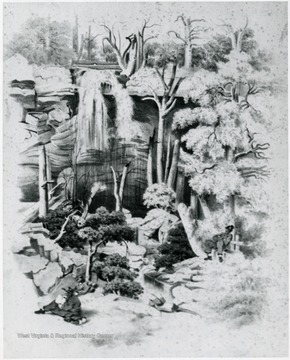
- IDNO:
- 035265
- Title:
- Water Fall on the Road between Tompkin's Farm and Gauley Bridge, W. Va.
- Date:
- 1862
- Description:
- "Entered according to act of Congress in the year 1862 by J. Nep. Roesler in the clerk's office of the District Court of the Southern District of Ohio. Sketched from nature and drawn on stone by J. Nep. Roesler Corpl. Of Color Guard Comp. G 47th Regt. O.V.-U.S.A. Printed by Ehrgott, Forbriger & Co., Cincinnati."

- IDNO:
- 037149
- Title:
- Stonewall Jackson Gravesite, Lexington, Va.
- Description:
- Confederate General Thomas J. "Stonewall" Jackson's gravesite at Stonewall Jackson Memorial Cemetery in Lexington, Virginia.

- IDNO:
- 037866
- Title:
- Civil War Wounds on Back of House at Locust Hill, Jefferson County, W. VA.
- Description:
- Close-up look at the damage to the house at Locust Hill, inflicted during a battle between the armies of Confederate General Jubal Early and Federal General Philip Sheridan, 1864/08/21
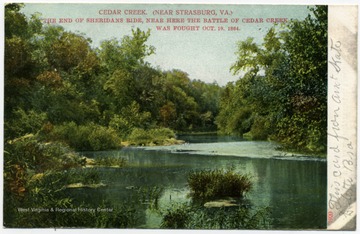
- IDNO:
- 038293
- Title:
- Cedar Creek, Near Strasburg, Shenandoah Valley, Va.
- Date:
- 1907
- Description:
- The Battle of Cedar Creek was fought here on October 19, 1864. Confederate forces under General Jubal Early were throw back and crushed by the Union Army after General Phil Sheridan rallied his troops in a counter attack. The Rebels were never able to mount another threat in the Valley.
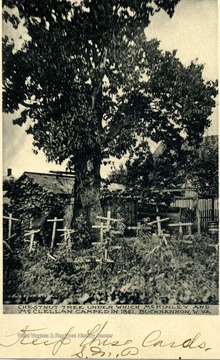
- IDNO:
- 038295
- Title:
- Chestnut Tree Under Which McKinley and McClellan Camped, Buckhannon, W. Va
- Date:
- 1907
- Description:
- Tree under which Union Army Quartermaster William McKinley (later President of the United States) and General McClellan camped during the Battle Summer of 1861 in Western (West) Virginia.
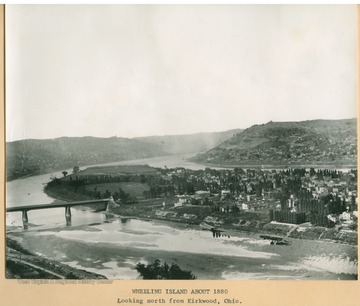
- IDNO:
- 038926
- Title:
- Wheeling Island, Ohio County, W. Va.
- Date:
- ca.1880
- Description:
- Looking north from Kirkwood, Ohio. The site of the Union Army military camp during the Civil War was just north on the island, at the end of the covered bridge to the left.

- IDNO:
- 039052
- Title:
- Two Battle Scarred Flags of Twelfth West Virginia Regiment
- Description:
- American flags followed into several battles, including Gettysburg and Petersburg, by the 12th West Virginia Regiment during the Civil War. Each flag has 35 stars, the 35th star is for the new state of West Virginia.
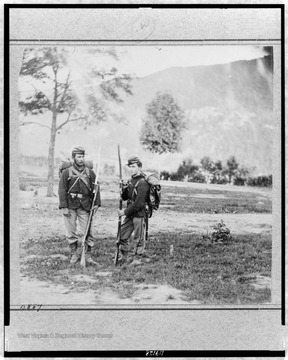
- IDNO:
- 039083
- Title:
- Soldiers of 22nd New York Militia, Union Army, Harpers Ferry, Va. (W. Va.)
- Date:
- 1861
- Description:
- Two unidentified Union soldiers in uniform, full pack and armed on Camp Hill above Harpers Ferry during the Federal forces occupation of the area early in the Civil War. Note the huge bayonets attached to their rifles.

- IDNO:
- 039084
- Title:
- Soldiers of 22nd New York Militia, Camp Hill, Harpers Ferry, Va. (W. Va.)
- Date:
- ca. 1861
- Description:
- Two unidentified soldiers of the 22nd New York State Militia, Union Army, in full uniform and armed, standing in front of a caisson. Note the caisson carries a spare wheel.
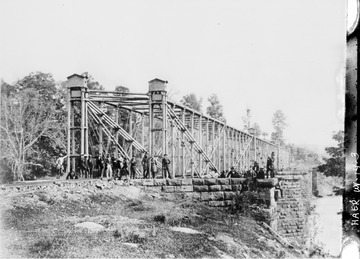
- IDNO:
- 039086
- Title:
- Baltimore and Ohio Railroad Bridge at Fairmont, Va. (later W. Va.) Destroyed During Civil War
- Date:
- ca.1855
- Description:
- This 305 foot long iron bridge over the Monongahela River in Marion County was built in 1852 at the astronomical price of 1/2 million dollars and was, at that time, the longest iron bridge in the country. Confederate General "Grumble" Jones targeted this bridge during his infamous 1863 raid. After two failed attempts to blow the bridge, he succeeded on the third try.
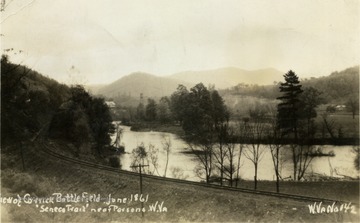
- IDNO:
- 039130
- Title:
- Corricks Ford Battlefield and Seneca Trail on Cheat River, Parsons, Tucker County, W. Va.
- Date:
- ca. 1934
- Description:
- Photograph postcard of Corricks Ford on the Cheat River where Union forces commanded by General Thomas Morris, defeated Confederate troops under General Robert Garnett, July 13,1861. Garnett was killed in the fight, the first general officer to die in action in the Civil War.

- IDNO:
- 039186
- Title:
- Virginia Governor Francis H. Pierpont and Illinois Troops, Wheeling, Va. (W. Va.)
- Date:
- 1861/08/12
- Description:
- A wood craving illustration published in "The New York Illustrated News", with the caption: "Governor Pierrpont (sic) in front of the Custom-House, Wheeling, Virginia., welcoming the Illinois troops to the soil of Virginia." Pierpont was the governor of the Restored Government of Virginia, loyal to the Union during the Civil War.











